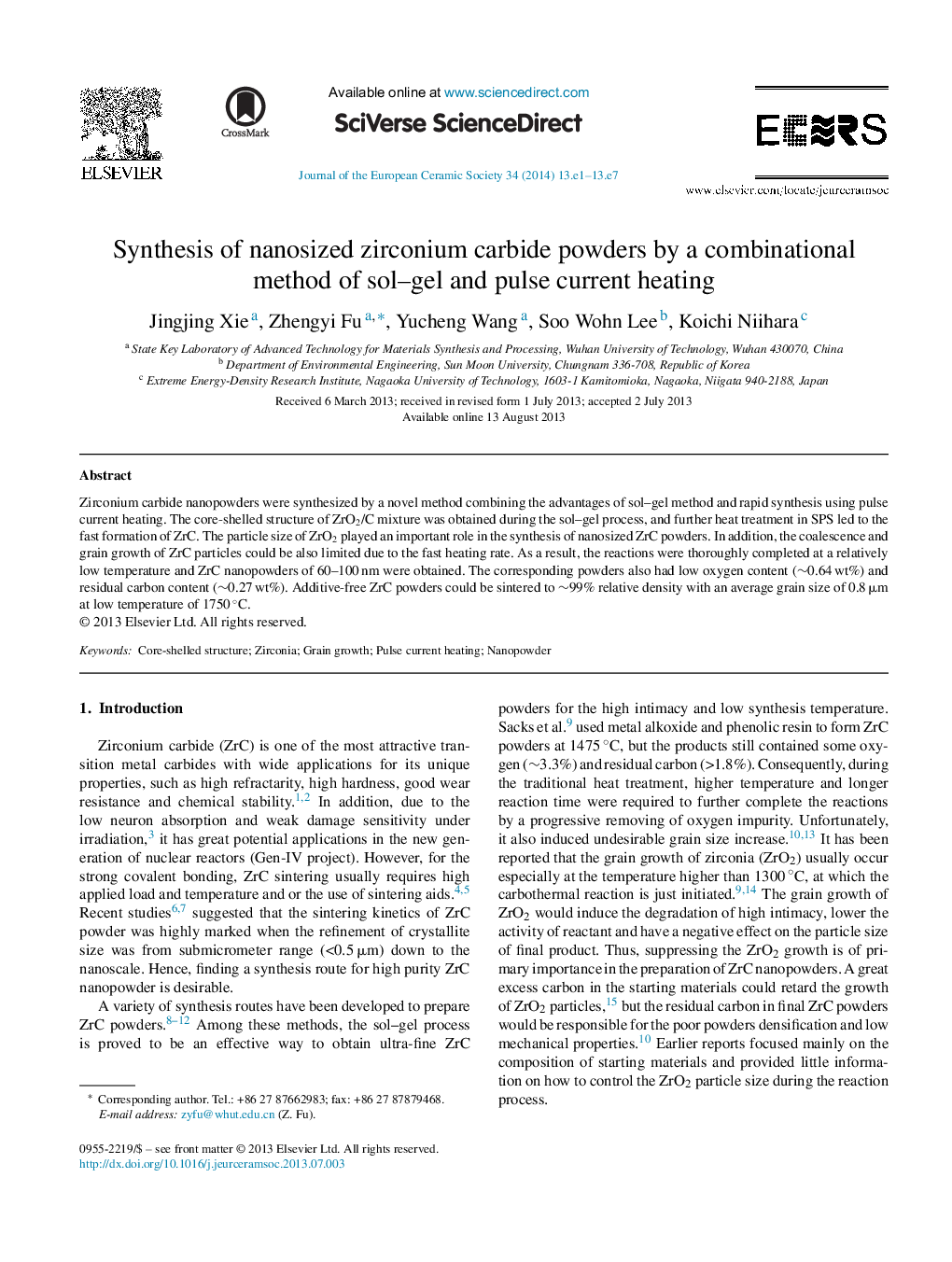| Article ID | Journal | Published Year | Pages | File Type |
|---|---|---|---|---|
| 1475220 | Journal of the European Ceramic Society | 2014 | 7 Pages |
Abstract
Zirconium carbide nanopowders were synthesized by a novel method combining the advantages of sol-gel method and rapid synthesis using pulse current heating. The core-shelled structure of ZrO2/C mixture was obtained during the sol-gel process, and further heat treatment in SPS led to the fast formation of ZrC. The particle size of ZrO2 played an important role in the synthesis of nanosized ZrC powders. In addition, the coalescence and grain growth of ZrC particles could be also limited due to the fast heating rate. As a result, the reactions were thoroughly completed at a relatively low temperature and ZrC nanopowders of 60-100 nm were obtained. The corresponding powders also had low oxygen content (â¼0.64 wt%) and residual carbon content (â¼0.27 wt%). Additive-free ZrC powders could be sintered to â¼99% relative density with an average grain size of 0.8 μm at low temperature of 1750 °C.
Keywords
Related Topics
Physical Sciences and Engineering
Materials Science
Ceramics and Composites
Authors
Jingjing Xie, Zhengyi Fu, Yucheng Wang, Soo Wohn Lee, Koichi Niihara,
